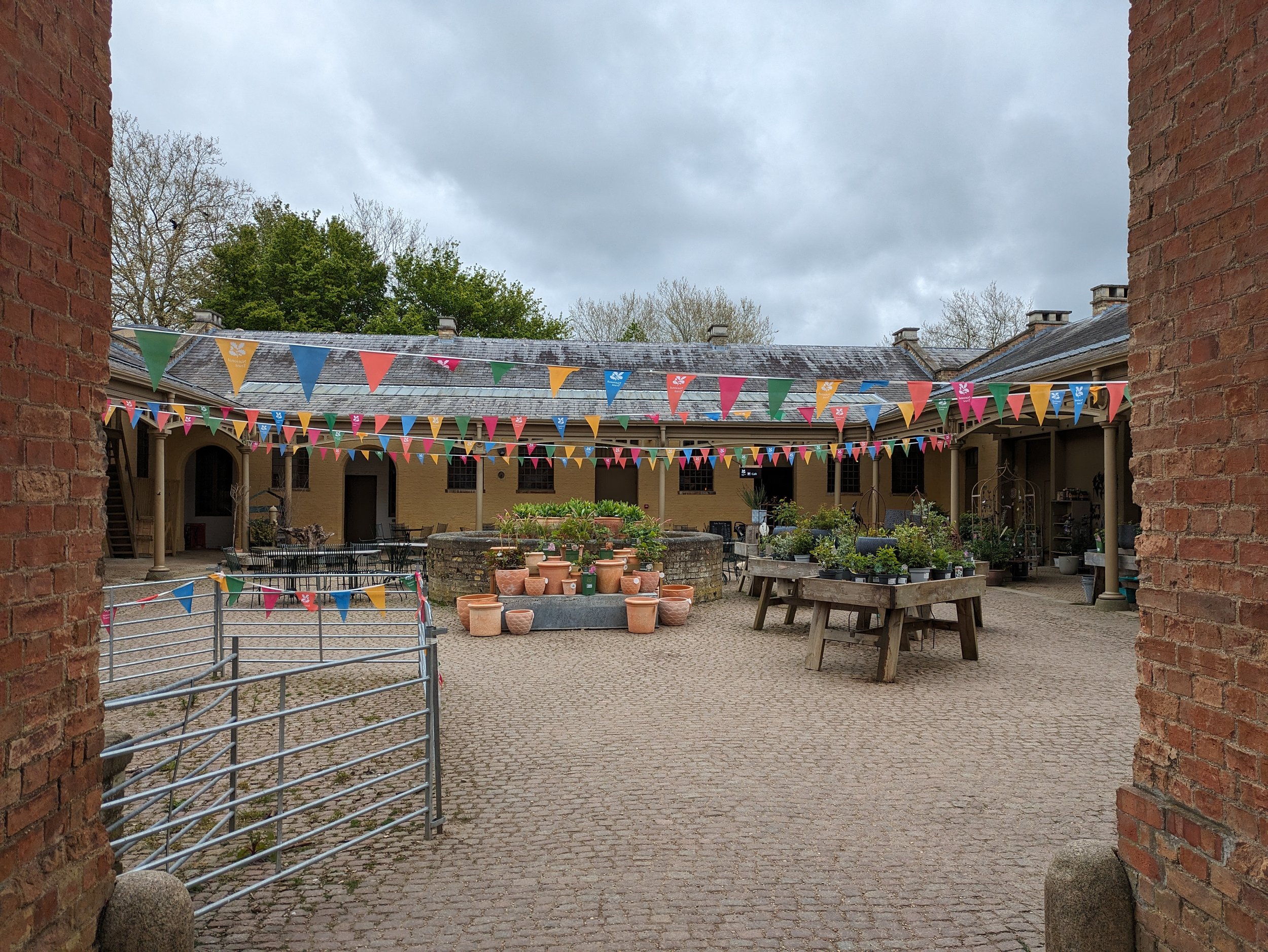A Visit to Wimpole Estate, Cambridgeshire
Wimpole Estate is located within the civil parish of Wimpole, Cambridgeshire, England. It has been continuously occupied for at least 2,000 years with evidence from Roman, Anglo Saxon and medieval times. Wimpole was owned by a number of different families. Each family left their mark on the home with many upgrades over the years.
Wimpole Estate Owners History (photo galleries after)
Chicheley (1428–1686) - The Chicheleys lived at Wimpole for 250 years from 1428; The gabled manor house was demolished and newer parts of the house were built in the 1640s–50s by Thomas Chicheley
Cutler (1686–1710) - In 1686, Sir John Cutler acquired Wimpole from his colleague, the grocer Thomas Chicheley, and held onto the property until his passing in 1693.
Robartes (1660–1723) - Charles Robartes, 2nd Earl of Radnor, acquired Wimpole by wedlock to Elizabeth Cutler, Elizabeth married Charles without her father’s consent, but he bequeathed Wimpole to her on his deathbed. Elizabeth passed away in 1697, and Radnor utilized her wealth to transform Wimpole into a renowned garden and residence of its time. Economic difficulties led him to part with the estate in 1710.
Holles (1710–1711) - The 1st Duke of Newcastle owned Wimpole for a short time before his passing in a riding accident. His only child, Lady Herietta Cavendish-Holles, became principal heiress.
Harley (1711–1740) - Edward Harley, Earl of Oxford and Earl Mortimer, married Lady Henrietta Cavendish-Holles. They both worked on enlarging the house. He was a passionate collector, accumulating many books, prints, and pamphlets. His collection was given to the nation in 1753, creating the British Library. However, he faced financial troubles and had to sell the estate.
Yorke, Earl of Harwicke (1740–1894) - In 1739, the 1st Earl of Hardwicke and Lord Chancellor purchased Wimpole and rebuilt its north and south fronts using red brick and Portland stone. He also converted Harley's cabinet rooms into a single gallery for his extensive art collection. As Attorney-General from 1724 to 1734, Yorke is known for issuing the 1729 'Yorke-Talbot Opinion' with Charles Talbot, Solicitor General. This opinion, in response to discussions about the rights of enslaved individuals brought to Britain from the West Indies and the differences between English law and that of its colonies, concluded that enslaved people remained enslaved in Britain and could be returned to their owners' colonies at their owners' discretion. They were also not considered free through Christian baptism, a ruling that set the stage for the 'Bill of Rights' for slavery in Britain. However, this ruling was later reversed in 1772 by William Murray, 1st Earl of Mansfield in the Somerset v. Stewart case, which prohibited the forced removal of an enslaved person from England.
Philip Yorke (1720–90) - In the 1760s, the 2nd Earl hired 'Capability' Brown to design the north park, adding a gothic tower, serpentine lakes, and a 'Chinese' bridge.
The 3rd Earl of Hardwicke (1757–1834) - He was a politician and had a passion for architecture and improving farming. In 1790, he hired the famous architect Sir John Soane to renovate his home, adding the Yellow Drawing Room, Bath House, and Book Room, and to construct a model farm.
Vice Admiral Charles Yorke (1799–1873) added a new servant wing, a large conservatory, and a stable block to his home. He also started a fire brigade for the estate. Queen Victoria and Prince Albert stayed with him for two days in 1843.
The 5th Earl of Hardwicke (1836–97) - A well-known gambler among the Prince of Wales' group, nicknamed 'Champagne Charlie' after his passing. He accumulated significant debts and was sold to Wimpole, who couldn't sell the property. Lord Robartes then took possession of the house and estate.
The Viscounts Clifden (1894–1937) - Lord Robartes, the sixth Viscount Clifden, inherited Wimpole from Charles Yorke and made it his son Gerald's home in 1906. However, keeping up with Lanhydrock and Wimpole became too costly, so Gerald Agar Robartes, the 7th Viscount Clifton, relocated to Lanhydrock in Cornwall. Wimpole was only used sparingly, for hunting, horse racing at Newmarket, and cricket matches.
George and Brambridge (1938–1976) - In 1938, Captain George and Mrs. Elsie Bambridge rented Wimpole, and then bought it in 1942. Elsie Bambridge, Rudyard Kipling's only child, used her father's book royalties to renovate the house. The house was mostly empty, so they bought and restored many of its former furniture and art pieces from the families who owned it before.
The Second World War - During World War II, the Bambridge family moved to the basement for safety, as the War Office took over the Wimpole Estate. The lack of basic utilities like electricity and proper plumbing meant only the Servant's Wing was usable. Captain Bambridge passed away in 1943 from hypothermia while hunting. Following the death of the last owner, Mrs. Bambridge, the estate faced financial challenges in maintaining it. The estate saw the demolition of several buildings, including the east and west wings of the mansion and other structures.
The National Trust - In 1976, Mrs. Bambridge left the estate to the National Trust, 80 years old. Since then, the Trust has worked to restore the gardens, parkland, farm, and house, continuing Mrs. Bambridge's legacy.
Wimpole Estate Entry, Bookshop & Café
















Inner Hall & Saloon









Yellow Drawing Room









Red Drawing Room










Book Room & Library











South Drawing Room











Ante Room



Grand Staircase






Lord Chancellor’s Bedroom




Lord Chancellor’s Dressing Room, & Vestibule









Ms. Brambridge Bedroom & Study






The Print Room





The Bath House




Breakfast Room & Dining Room










Entry Hall, Ante Chapel, & Chapel






